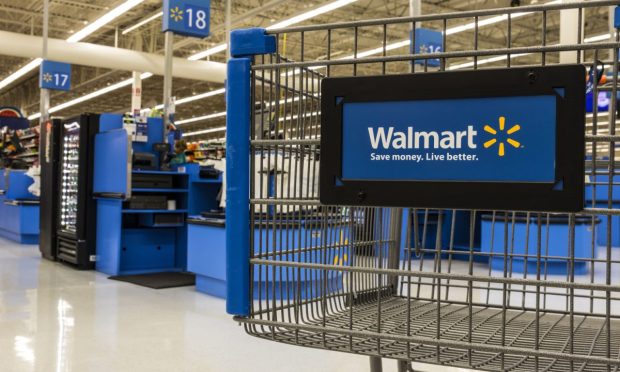Walmart Predicts Shift Away From Grocery as Food Inflation Slows

As food-at-home inflation eases, Walmart, the world’s largest grocer, predicts that consumer spending is going to shift away from the category toward general merchandise.
In a fireside chat Tuesday (Sept. 12) for the 2023 Goldman Sachs Global Consumer Conference, the mega-retailer’s president and CEO Doug McMillon noted that while he does not expect consumers to be spending dramatically more or less next year, the kinds of products that they are purchasing may change.
“The more disinflation happens in categories like dry grocery and consumables, the more discretionary income they have to buy general merchandise. So, we may see mix shifts,” McMillon explained.
Indeed, grocery inflation has slowed. According to, Bureau of Labor Statistics (BLS) Consumer Price Index (CPI) data released Wednesday (Sept. 13), in August, food-at-home inflation was down to just +3% year over year. For context, last year, food-at-home inflation was more than four times that, coming in at 13.5% year-over-year in August 2022.
With this shift, McMillion contends, consumers are finding room in their budgets to purchase the kinds of items they could not when food and other basic needs were taking up the bulk of their paychecks.
“General merchandise prices are coming down and we’ve seen food and dry grocery — … consumables, paper goods, cleaning supplies — that level of pricing has leveled out to an extent,” McMillon said. “And with that, combined with the lower prices in general merchandise and the strength of our customers overall, performance was better in general merchandise than I would have thought it would have been.”
In recent years, rapid inflation across grocery and other categories has been a blessing and a curse for the retail giant.
Grocery sales have grown considerably throughout this period, with the company making gains with higher-income consumers trading down from more premium retailers. However, the category’s margins are significantly narrower than general merchandise, taking a hit on the grocer’s profitability.
Consumers have made significant cutbacks in retail spending — more so than in grocery.
PYMNTS Intelligence from the study “Consumer Inflation Sentiment Report: Consumers Cut Back by Trading Down,” which draws from an April survey of more than 2,000 U.S. consumers, revealed that 69% of shoppers had cut down on nonessential retail spending in response to inflation, considerably higher than the 57% that said the same of grocery spending.
Now, the majority of shoppers are finding ways to treat themselves. The latest installment of PYMNTS’ series, “New Reality Check: The Paycheck-to-Paycheck Report,” created in collaboration with LendingClub, reveals that 70% of consumers are buying nice-to-have retail products at least some of the time. The most common retail splurge is clothing, followed by health and beauty products. The survey polled 3,400 U.S. consumers in July.
Indeed, consumer spending has been trending upwards.
Still, financial challenges remain. PYMNTS Intelligence reveals that 72% of consumers say their income has not kept up with inflation or has barely kept up with it. Plus, 41% of employed consumers say that their current salary does not meet their expectations.

